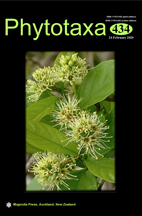College of Resources and Environment, Yunnan Agricultural University, Kunming 650201, Yunnan, China.
Center of Excellence in Fungal Research, Mae Fah Luang University, 57100 Chiang Rai, Thailand.
School of Science, Mae Fah Luang University, Chiang Rai 57100, Thailand.
Key laboratory for Plant Diversity and Biogeography of East Asia, Kunming Institute of Botany, Chinese Academy of Science, Kunming 650201, Yunnan, People’s Republic of China.
Centre for Mountain Futures, Kunming Institute of Botany, Kunming 650201, Yunnan, China.
East and Central Asia Regional Office, World Agroforestry Centre, Kunming 650201, Yunnan, China.
Mushroom Research Foundation, 128 M.3 Ban Pa Deng T. Pa Pae, A. Mae Taeng, Chiang Mai 50150, Thailand.
Key laboratory for Plant Diversity and Biogeography of East Asia, Kunming Institute of Botany, Chinese Academy of Science, Kunming 650201, Yunnan, People’s Republic of China.
Centre for Mountain Futures, Kunming Institute of Botany, Kunming 650201, Yunnan, China.
Key laboratory for Plant Diversity and Biogeography of East Asia, Kunming Institute of Botany, Chinese Academy of Science, Kunming 650201, Yunnan, People’s Republic of China.
Centre for Mountain Futures, Kunming Institute of Botany, Kunming 650201, Yunnan, China.
East and Central Asia Regional Office, World Agroforestry Centre, Kunming 650201, Yunnan, China.
Center of Excellence in Fungal Research, Mae Fah Luang University, 57100 Chiang Rai, Thailand.
School of Science, Mae Fah Luang University, Chiang Rai 57100, Thailand.
Department of Biology, Faculty of Science, Chiang Mai University, Chiang Mai, 50200, Thailand.
Center of Excellence in Bioresources for Agriculture, Industry and Medicine, Department of Biology, Faculty of Science, Chiang Mai University, 50200, Thailand.
College of Resources and Environment, Yunnan Agricultural University, Kunming 650201, Yunnan, China.
East and Central Asia Regional Office, World Agroforestry Centre, Kunming 650201, Yunnan, China.
Key laboratory for Plant Diversity and Biogeography of East Asia, Kunming Institute of Botany, Chinese Academy of Science, Kunming 650201, Yunnan, People’s Republic of China.
Centre for Mountain Futures, Kunming Institute of Botany, Kunming 650201, Yunnan, China.
East and Central Asia Regional Office, World Agroforestry Centre, Kunming 650201, Yunnan, China.
Center of Excellence in Fungal Research, Mae Fah Luang University, 57100 Chiang Rai, Thailand.
School of Science, Mae Fah Luang University, Chiang Rai 57100, Thailand.
Key laboratory for Plant Diversity and Biogeography of East Asia, Kunming Institute of Botany, Chinese Academy of Science, Kunming 650201, Yunnan, People’s Republic of China.
Mushroom Research Foundation, 128 M.3 Ban Pa Deng T. Pa Pae, A. Mae Taeng, Chiang Mai 50150, Thailand.

